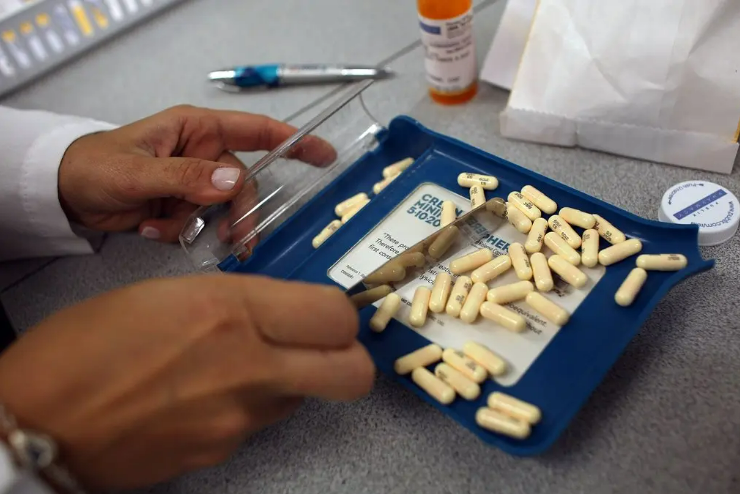我们通过发表论文来表彰学生 STEM 写作比赛的前 11 名获奖者。这是金在贞的。

这篇文章由来自纽约市亨特学院高中的 Jaejeong Kim 撰写,现年 17 岁,是学习网络第二届年度 STEM 写作比赛的前 11 名获奖者之一,我们收到了 3,741 份参赛作品。
A Rising Star: These Star-Shaped Polymers May Be Our Last Defense Against Superbugs
The horror starts with a single cut on your finger. Suddenly, your vulnerable insides are continuous with the wide expanse of the universe, and millions of bacteria swarm in. Your immune system puts up a valiant effort, but the bacteria simply multiply too quickly. Like a hydra, one defeated foe is replaced with two more. And as we watch helplessly, the invisible enemy destroys us from the inside. Blood pressure plummets, and multiple organs start shutting down. This is not a fear of the distant past — 700,000 people die annually from antibiotic-resistant bacterial infections. According to World Health Organization estimates, that number could jump to 10 million by 2050, overtaking the number of cancer deaths.
Bacterial infections are nothing new — they have been a persistent scourge for almost all of human history. But since the first antibiotic was discovered in 1928, killer bacteria have been consigned to the past. Nowadays, bacterial infections seem trivial — just pop a few antibiotics and you’re fine. But our heavy reliance on antibiotics may have taken a toll. Bacteria are living creatures, and they can evolve. As time passes, more and more bacteria are evolving to become resistant to our antibiotics. These antibiotic-resistant bacteria are known as “superbugs,” and we currently have almost no way to defeat them.
So with our antibiotics neutralized, what do we turn to? Luckily, a team from the Melbourne School of Engineering may have developed a new weapon. Named “structurally nanoengineered antimicrobial peptide polymers” (SNAPPs, for short), these star-shaped polymers target antibiotic-resistant bacteria and tear them apart.
As Shu Lam, one of the lead scientists, explained, “Bacteria need to divide and grow, but when our star is attached to the membrane, it interferes with these processes. This puts a lot of stress on the bacteria and it initiates a process to kill itself from stress.” The team found that the star polymers were effective against all Gram-negative bacteria they tested, including several antibiotic-resistant bacteria. The star polymers were also nontoxic to human cells and relatively cheap to produce, making them a good candidate for an antimicrobial drug.
But what if bacteria become resistant to these star polymers too? Scientists have found that this is unlikely to happen. Even after 600 generations, bacteria showed almost no resistance to the star polymers. The team believes that this is because the polymers kill bacteria through multiple pathways, while most antibiotics only kill with a single pathway. SNAPPs can “rip apart” the bacteria cell wall, cause uncontrolled movement of ions in and out of the bacteria cell membrane, and initiate a biochemical pathway that makes the bacteria kill itself. This multipronged approach makes it extremely difficult for bacteria to develop resistance to this new weapon.
There is still much work to be done — these star polymers have yet to be tested on humans and will require years of research and development before they can be widely available. But when the waning sun finally sets on the era of effective antibiotics, these polymers may be the star that lights our way.
Works Cited
Dwyer, Vincent. “Australian Scientists May Have Just Saved Us From Antibiotic-Resistant Superbugs.” Vice, 12 Sept. 2016.
Jacobs, Andrew. “U.N. Issues Urgent Warning On The Growing Peril Of Drug-Resistant Infections.” The New York Times, 29 April 2019.
Jacobs, Andrew. “W.H.O. Warns That Pipeline For New Antibiotics Is Running Dry.” The New York Times, 17 Jan. 2020.
Lam, Shu J., Neil M. O’Brien-Simpson, Namfon Pantarat, Adrian Sulistio, et al. “Combating Multidrug-Resistant Gram-Negative Bacteria With Structurally Nanoengineered Antimicrobial Peptide Polymers.” Nature Microbiology, 12 Sept. 2016.
Science News Staff. “Killing Superbugs With Star-Shaped Polymers, Not Antibiotics.” Science News, 13 Sept. 2016.
Seppa, Nathan. “Drug Resistance Has Gone Global, W.H.O. Says.” Science News, 30 April 2014.